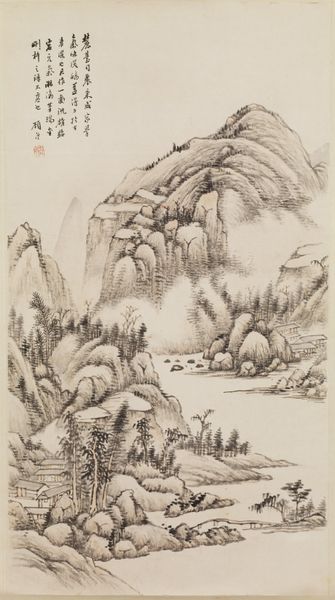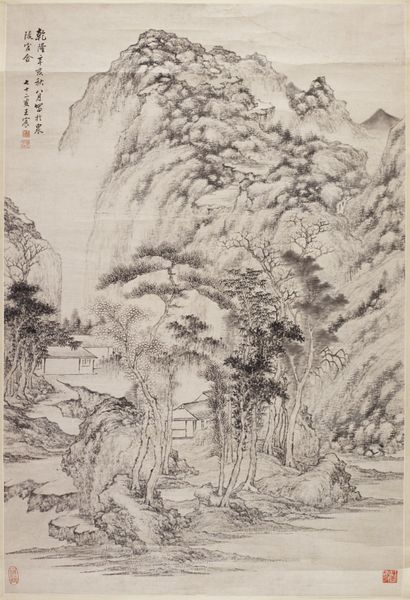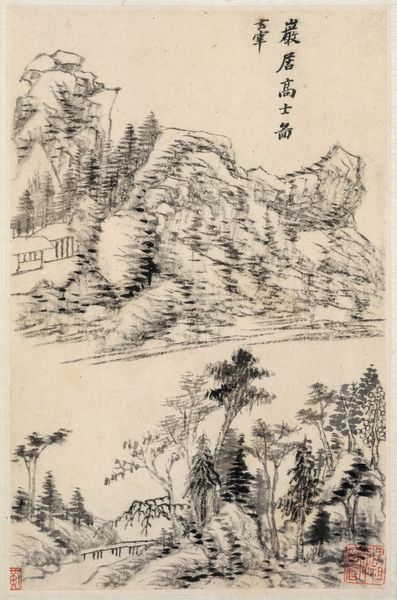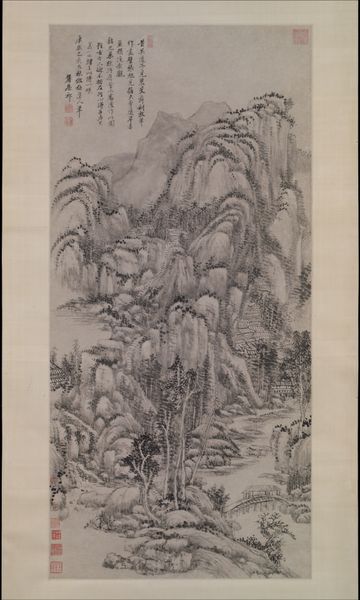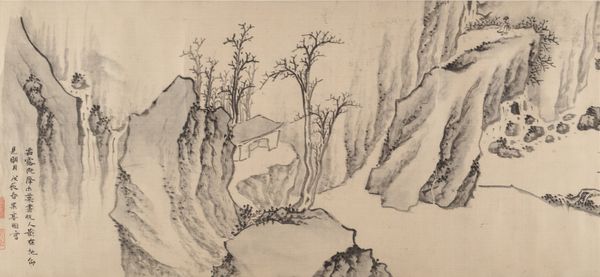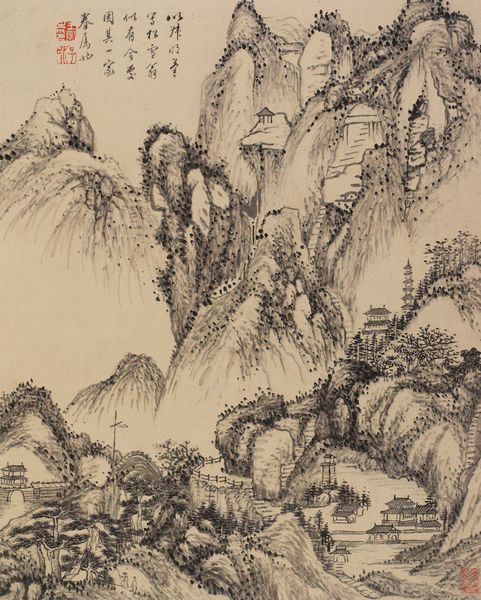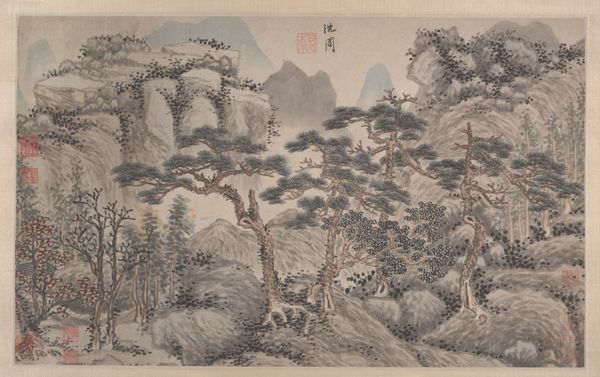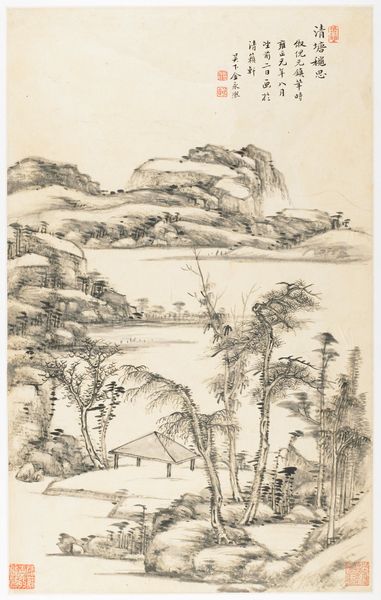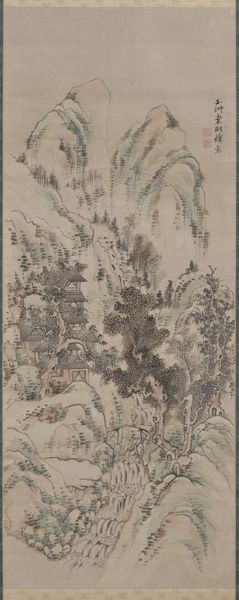
drawing, ink
#
drawing
#
asian-art
#
landscape
#
figuration
#
ink
Dimensions: 11 7/8 × 7 7/8 in. (30.16 × 20 cm)
Copyright: Public Domain
Curator: Standing before us is "Mountain Landscape," potentially created around 1851 by Kichibei Shōkoku. This ink drawing currently resides at the Minneapolis Institute of Art. Editor: It’s quite atmospheric, isn’t it? The composition, all verticality and mist, feels almost weightless, ethereal even. There is a palpable sense of scale delivered through these layered mountains, receding softly into the background. Curator: Indeed. Shōkoku masterfully employs ink wash techniques to convey depth and spatial recession. Note how he eschews stark outlines, favoring instead nuanced gradations to model the forms of the mountains and trees. The light, or lack thereof, directs the viewer's eyes. Editor: The human figures—those monks crossing the bridge—are cleverly positioned to further enhance this impression of grandeur, underlining humanity’s relatively humble position within the natural order. Their inclusion elevates what might otherwise be a straightforward landscape to something bordering on the allegorical, perhaps alluding to journey, or pilgrimage. Curator: Precisely. Landscapes during this period weren't merely depictions of scenery. They were often imbued with philosophical underpinnings, reflections on the relationship between man and nature. Here, the brushstrokes themselves mimic the forms they represent, short and choppy for the rocks, soft and flowing for the water. Editor: I appreciate, too, how the artist resists any clear focal point. Our eye roams freely, encouraged by the winding paths and gentle shifts in tone. It contributes to this sense of a unified whole, where individual elements are secondary to the overriding mood of contemplative serenity. Even without any specialized knowledge, there’s an intuitive understanding accessible through the visual syntax of this artwork. Curator: It also evokes an era of social and cultural shift in Japan. The Meiji Restoration was around the corner, which had an impact on all forms of traditional art, imbuing it with the desire to create and discover individual expression. Editor: I agree; viewing it with this historical context enriches the emotional dimensions of this piece. This exercise in historical art allows you to see through the eyes and brushstrokes of the past. Curator: Yes. “Mountain Landscape” serves as a visual portal into the values and beliefs of the past, reminding us how inextricably linked art is with cultural context.
Comments
No comments
Be the first to comment and join the conversation on the ultimate creative platform.

